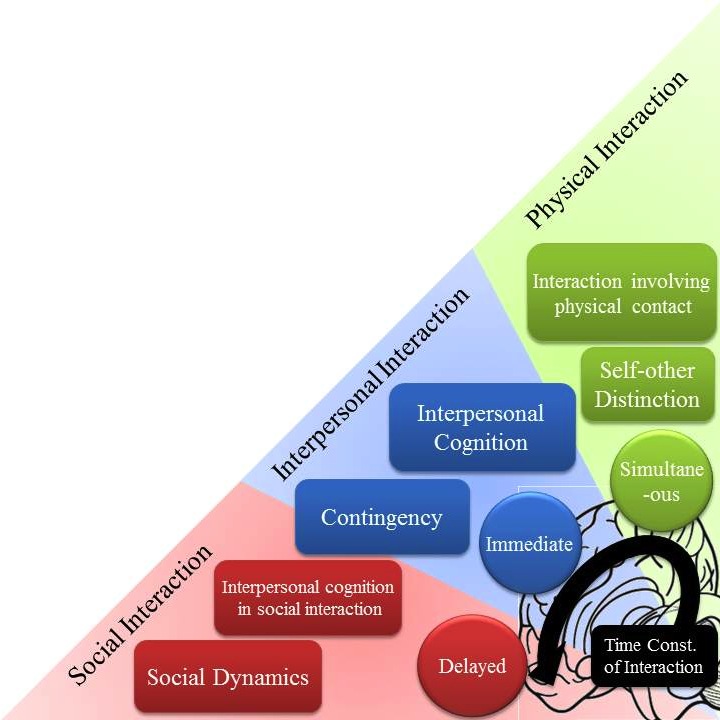Overview of the results
Infants establish various social relationships through the interaction of various time scale in their growth. Our group categorizes the infants’ interactions according to the time scale of the changes in their bodies, surroundings, and other people when they act (figure 1).
- Physical interaction: The interaction involves simultaneous or immediate changes like tactile interaction (e.g., interaction between body and environment in motor babbling).
- Interpersonal interaction: The interaction involves responses with some delay like a dialogue (e.g., interaction in which a caregiver physically helps his/her baby).
- Social interaction: The interaction involves feedbacks with large delay owing to multiple interpersonal interactions including interaction between others (e.g., triadic interaction including caregivers and baby).
The main outcome for the target
(a)
is the development of humanoid robot “CB2.” It is a novel research platform for synthetic approach in that it can simulate the interactions of various time scale. Furthermore, we have developed three standard humanoid platforms “M3-Neony”, “M3-Kindy”, and “M3-Synchy” which are designed oriented towards Physical, Interpersonal, and Social interactions, respectively. The studies on the target
(b) and
(c) produced numbers of hypotheses of social development based on observations of infant-caregiver interactions and verified them through experiments with humanoid robot platforms. We have used the humanoid platforms to study (1) self-other distinction on a humanoid robot having whole-body tactile sensor, (2) learning of whole-body movements of a humanoid robot based on biased random walk mechanism, and (3) learning of dynamic motion of a humanoid robot by a person’s physical help, concerning the Physical interaction. We have also studied (4) modelling of interpersonal cognition on mutual responsive interaction and (5) social learning mechanism based on other perons’s contingency concerning the Interpersonal interaction. The study on Social
interaction modelled interpersonal cognition mediated by third person’s responses. By the approach with the observation of infant-caregiver interaction, (1) we have investigated a developmental process of infant capabilitiy to provide temporal control of body movements and (2) we have modelled a brain function to provide a development of social cognitive capability.
Figure1 Classification of interaction owing to time constant of the interaction

